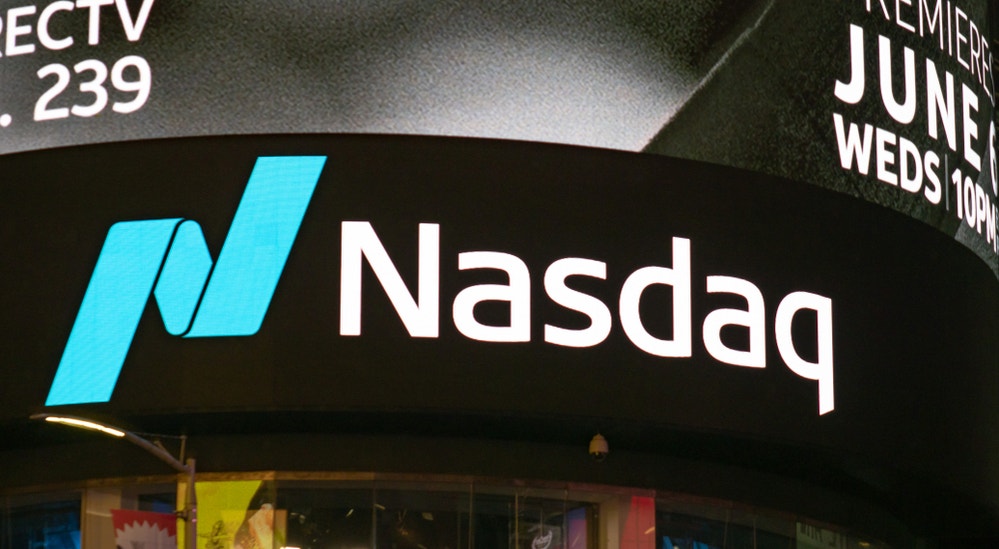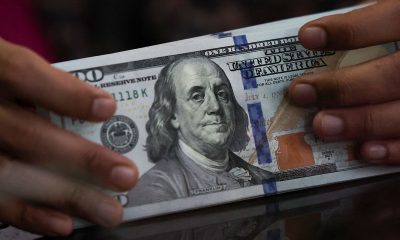Economy
Plastic Additives Market worth $59.9 billion by 2026 Globally, at a CAGR of 5.6 %, says MarketsandMarkets™

Chicago, June 27, 2023 (GLOBE NEWSWIRE) — The Plastic Additives Market is projected to reach USD 59.9 billion by 2026, at a CAGR of 5.6 % from USD 45.6 billion in 2021, as per the recent study by MarketsandMarkets™. Additives are added to plastics to improve their physical properties such as strength, chemical and heat resistance, clarity, weather resistance, and color preservation. Plastic additives are used to modify the physical or chemical properties of polymers to reinforce their mechanical properties, making them stronger and better for end-use applications. They are used in a variety of applications. Some of the important end-use applications of plastic additives are packaging, consumer goods, construction, and automotive.Download PDF Brochure: https://www.marketsandmarkets.com/pdfdownloadNew.asp?id=722Browse In-Depth TOC On “Plastic Additives Market”294 – Market Data Tables 62 – Figures 284 – Pages List of Key Players in Plastic Additives Market:BASF SE (Germany)Clariant AG (Switzerland)Albemarle Corporation (U.S.) Songwon Industrial Co. Ltd. (South Korea)Nouryon (Netherland)LANXESS AG (Germany)Evonik Industries AG (Germany)Kaneka Corporation (Japan)The Dow Chemical Company (U.S.)Drivers, Restraints and Opportunities in Plastic Additives Market:Drivers: Replacement of conventional materials with plasticRestraints: Stringent government regulations governing plastic industry.Opportunity: Cost effectiveness and commercialization of plastic.Get Free Sample Pages: https://www.marketsandmarkets.com/requestsampleNew.asp?id=722Key Findings of the Study:Packaging is the largest end-use industry for plastic additives market during the forecast period.Europe is estimated to be the second-largest plastic additives market during the forecast period.APAC is expected to be the largest plastic additives market during the forecast period, in terms of value and volume.Additives are used to improve the properties of polymer to enable production of better finished products. The plastic additives market is segmented into five-six categories based on type: plasticizers, stabilizers, flame retardants, impact modifiers, blowing agents, nucleating agents, and others. Of Among these categories, plasticizers are the most widely used type of plastic additives type, followed by flame retardants. A major part of plasticizers is used in polyvinyl chloride. Plasticizers are highly used in manufacturing PVC products for construction applications. The plastic market heavily depends on additives to strengthen the properties of plastic to be used for several applications such as food packaging, automotive interiors and exteriors, storage containers, homecare, and industrial equipment. All these products are manufactured from polymers that are mixed with a complex blend of materials called additives to enhance their physical or chemical structure. Plastic additives impart unique properties to the polymer to which they are added.The plastic additives market is segmented into three categories based on plastics: commodity, engineering, and high-performance plastics. Manufacturers produce different types of additives depending on the plastic grade and specific application. The demand for commodity plastics is expected to grow due to the increasing use of polyolefin plastic packaging in food & beverages and pharmaceutical applications. Commodity plastics are widely used thermoplastics. They are produced in large volume owing to their low raw material cost and abundant availability. The most common commodity plastics are PS, PE, PP, PVC, ABS, and PMMA. Engineering plastics which possess excellent physical properties for efficient and prolonged use. These polymers can work under wide temperature ranges, various mechanical stresses and in various chemical environments. High-performance plastics are thermally stable plastics, which can withstand temperatures above 1500C. These plastics have superior mechanical properties.Get 10% Free Customization on this Report: https://www.marketsandmarkets.com/requestCustomizationNew.asp?id=722The plastic additives market is segmented based on major five applications: packaging, construction, consumer goods, automotive, agriculture, and others. The increasing use of plasticizers and flame retardants in various applications such as electronic goods, panels, packaging films, bottles, caps, containers, PVC pipes, floor covering, cables, household goods, toys, automotive parts, greenhouse films, and textile fibres is driving the plastic additives market. Plastic additives such as stabilizers, impact modifiers, blowing agents, nucleating agents and others are now widely used to enhance the physical and chemical properties of plastics and plastic products. End-use industries such as packaging, consumer goods, and automotive have increased the use of plastics in their end-products.Because of region, APAC is projected to be the largest market for plastic additives market during the forecast period. APAC is the most promising market for plastics and related industries, including plastic additives. It is the largest and fastest-growing market for plastic additives. The increasing demand from packaging, consumer goods, and automotive applications is driving the market for plastic additives in the region. The rising purchasing power of the middle-class population also acts as a key market driver. The rising demand for environment-friendly products is driving innovation in the plastics industry. High-end products such as consumer goods and electronic devices demand damage-free surfaces. Thus, the need for anti-scratch products arises, which drives the market for plastic additives.Browse Adjacent Markets Specialty Chemicals Market Research Reports & ConsultingRelated Reports:Plasticizers MarketSpecialty Chemicals MarketFlame Retardants MarketAbout MarketsandMarkets™
MarketsandMarkets™ is a blue ocean alternative in growth consulting and program management, leveraging a man-machine offering to drive supernormal growth for progressive organizations in the B2B space. We have the widest lens on emerging technologies, making us proficient in co-creating supernormal growth for clients.
The B2B economy is witnessing the emergence of $25 trillion of new revenue streams that are substituting existing revenue streams in this decade alone. We work with clients on growth programs, helping them monetize this $25 trillion opportunity through our service lines – TAM Expansion, Go-to-Market (GTM) Strategy to Execution, Market Share Gain, Account Enablement, and Thought Leadership Marketing.
Built on the ‘GIVE Growth’ principle, we work with several Forbes Global 2000 B2B companies – helping them stay relevant in a disruptive ecosystem. Our insights and strategies are molded by our industry experts, cutting-edge AI-powered Market Intelligence Cloud, and years of research. The KnowledgeStore™ (our Market Intelligence Cloud) integrates our research, facilitates an analysis of interconnections through a set of applications, helping clients look at the entire ecosystem and understand the revenue shifts happening in their industry.
To find out more, visit www.MarketsandMarkets™.com or follow us on Twitter, LinkedIn and Facebook.
Contact:
Mr. Aashish Mehra
MarketsandMarkets™ INC.
630 Dundee Road
Suite 430
Northbrook, IL 60062
USA: +1-888-600-6441
Email: sales@marketsandmarkets.com
Economy
Russian central bank says it needs months to make sure CPI falling before rate cuts -RBC


© Reuters. Russian Central Bank Governor Elvira Nabiullina attends a news conference in Moscow, Russia June 14, 2019. REUTERS/Shamil Zhumatov/File Photo
MOSCOW (Reuters) – Russia’s central bank will need two to three months to make sure that inflation is steadily declining before taking any decision on interest rate cuts, the bank’s governor Elvira Nabiullina told RBC media on Sunday.
The central bank raised its key interest rate by 100 basis points to 16% earlier in December, hiking for the fifth consecutive meeting in response to stubborn inflation, and suggested that its tightening cycle was nearly over.
Nabiullina said it was not yet clear when exactly the regulator would start cutting rates, however.
“We really need to make sure that inflation is steadily decreasing, that these are not one-off factors that can affect the rate of price growth in a particular month,” she said.
Nabiullina said the bank was taking into account a wide range of indicators but primarily those that “characterize the stability of inflation”.
“This will take two or three months or more – it depends on how much the wide range of indicators that characterize sustainable inflation declines,” she said.
The bank will next convene to set its benchmark rate on Feb. 16.
The governor also said the bank should have started monetary policy tightening earlier than in July, when it embarked on the rate-hiking cycle.
Economy
China identifies second set of projects in $140 billion spending plan


© Reuters. FILE PHOTO: Workers walk past an under-construction area with completed office towers in the background, in Shenzhen’s Qianhai new district, Guangdong province, China August 25, 2023. REUTERS/David Kirton/File Photo
SHANGHAI (Reuters) – China’s top planning body said on Saturday it had identified a second batch of public investment projects, including flood control and disaster relief programmes, under a bond issuance and investment plan announced in October to boost the economy.
With the latest tranche, China has now earmarked more than 800 billion yuan of its 1 trillion yuan ($140 billion) in additional government bond issuance in the fourth quarter, as it focuses on fiscal steps to shore up the flagging economy.
The National Development and Reform Commission (NDRC) said in a statement on Saturday it had identified 9,600 projects with planned investment of more than 560 billion yuan.
China’s economy, the world’s second largest, is struggling to regain its footing post-COVID-19 as policymakers grapple with tepid consumer demand, weak exports, falling foreign investment and a deepening real estate crisis.
The 1 trillion yuan in additional bond issuance will widen China’s 2023 budget deficit ratio to around 3.8 percent from 3 percent, the state-run Xinhua news agency has said.
“Construction of the projects will improve China’s flood control system, emergency response mechanism and disaster relief capabilities, and better protect people’s lives and property, so it is very significant,” the NDRC said.
The agency said it will coordinate with other government bodies to make sure that funds are allocated speedily for investment and that high standards of quality are maintained in project construction.
($1 = 7.1315 renminbi)
Economy
Russian central bank says it needs months to make sure CPI falling before rate cuts -RBC


© Reuters. Russian Central Bank Governor Elvira Nabiullina attends a news conference in Moscow, Russia June 14, 2019. REUTERS/Shamil Zhumatov/File Photo
MOSCOW (Reuters) – Russia’s central bank will need two to three months to make sure that inflation is steadily declining before taking any decision on interest rate cuts, the bank’s governor Elvira Nabiullina told RBC media on Sunday.
The central bank raised its key interest rate by 100 basis points to 16% earlier in December, hiking for the fifth consecutive meeting in response to stubborn inflation, and suggested that its tightening cycle was nearly over.
Nabiullina said it was not yet clear when exactly the regulator would start cutting rates, however.
“We really need to make sure that inflation is steadily decreasing, that these are not one-off factors that can affect the rate of price growth in a particular month,” she said.
Nabiullina said the bank was taking into account a wide range of indicators but primarily those that “characterize the stability of inflation”.
“This will take two or three months or more – it depends on how much the wide range of indicators that characterize sustainable inflation declines,” she said.
The bank will next convene to set its benchmark rate on Feb. 16.
The governor also said the bank should have started monetary policy tightening earlier than in July, when it embarked on the rate-hiking cycle.

 Forex3 years ago
Forex3 years agoForex Today: the dollar is gaining strength amid gloomy sentiment at the start of the Fed’s week

 Forex3 years ago
Forex3 years agoUnbiased review of Pocket Option broker

 Forex3 years ago
Forex3 years agoDollar to pound sterling exchange rate today: Pound plummeted to its lowest since 1985

 Forex3 years ago
Forex3 years agoHow is the Australian dollar doing today?

 Cryptocurrency3 years ago
Cryptocurrency3 years agoWhat happened in the crypto market – current events today

 World3 years ago
World3 years agoWhy are modern video games an art form?

 Commodities3 years ago
Commodities3 years agoCopper continues to fall in price on expectations of lower demand in China

 Economy3 years ago
Economy3 years agoCrude oil tankers double in price due to EU anti-Russian sanctions























